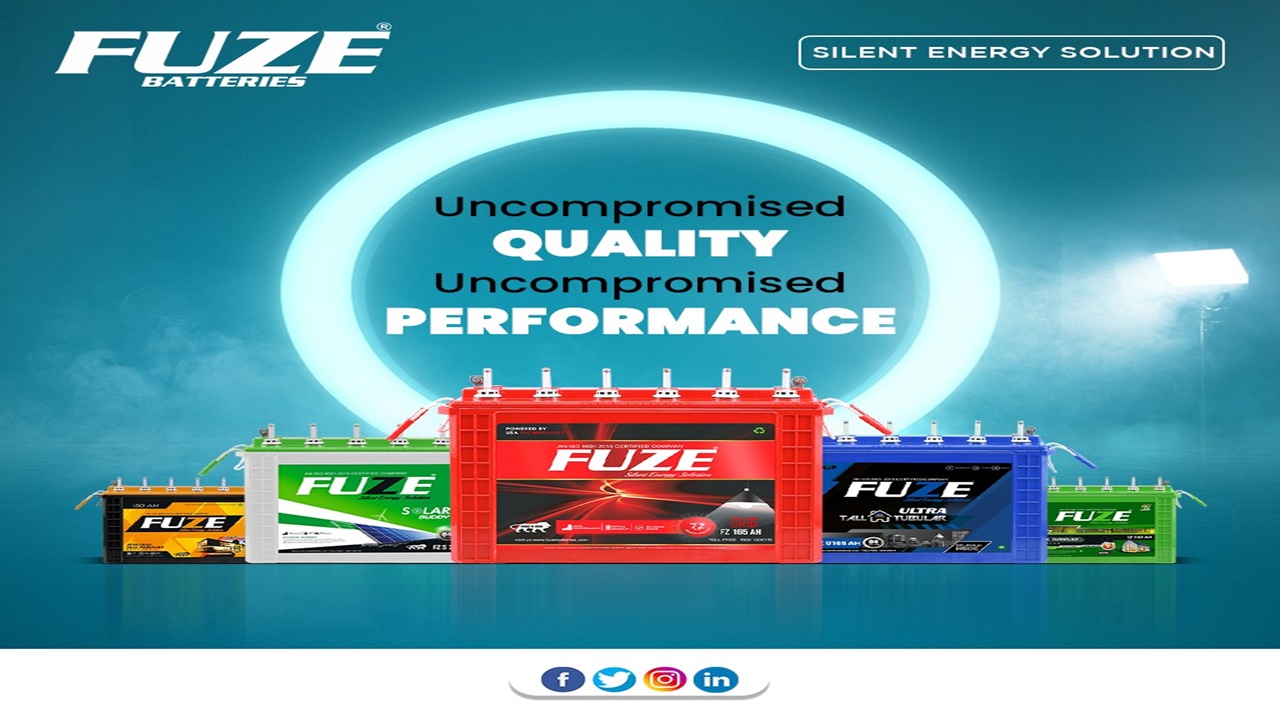A device which stores chemical energy and converts it into electrical energy is called a battery. It is a power source consisting of one or more electrochemical cells connected externally to supply power whenever needed. A Battery can be classified as
1.Primary Battery
2.Secondary Battery
Secondary batteries are generally bigger in size with a heavy construction and therefore, they store a high amount of energy. These batteries are commonly used for high power supply, in automobiles and inverters. They are also used in the power stations and substations because they have higher cell voltage and lower cost. Fuze is a leading battery manufacturer in India, offering durable batteries with unmatched performance and reliability.
What is Lead Acid Battery?
The lead acid battery uses a sponge lead and lead peroxide for creating a chemical reaction to convert the chemical energy into electrical power. When the chemical reaction is reversed, it results in recharging the battery. Hence, they are also known as rechargeable batteries.
Understanding the Construction of Lead Acid battery
A Lead Acid battery consists of various parts for the construction and smooth working of it. Let’s understand them in detail –
1. Container – The container is one of the main parts in a Lead acid battery. It is mostly made of strong plastic or at times with metal.
There is another part called prism, placed to support the two plates and also helps to prevent short circuit. The material of the container should be resistant to the sulphuric acid. They should not bend and should not form impurities as it can lead to electrolyte damage.
2. Plates – Another important part of a battery are plates which are all constructed in a different way in the form of a grid. It is made up of lead and active components. The grid of plates is very essential for conducting and passing the electricity equally on all the active material, otherwise, the active material will start to loosen and will fall out.
The grid is made up of lead and antimony. They are made up of the same design. Only difference is that the grid of the negative plate is made lighter because they are not as essential for the conduction of current.
3. Active component – It is a component which actively takes part during the chemical reaction in the battery during charging and discharging. The following are the active components are:
- Lead Peroxide – It is the positive active material.
- Sponge Lead – It is the negative active material.
- Dilute sulphuric Acid – It is used as an electrolyte.
4. Separators – They are thin sheets of non-conducting materials that are used to separate the negative and positive to insulate them from each other. They are made up of porous rubber, glass fiber, porous cellophane, nylon, or polyolefin film,
5. Battery Terminals – A battery has two terminals, a positive and a negative.
Almost everything works on a battery nowadays. Lead acid battery is one of the oldest types of battery ever created. Its practical applications are used in a variety of sectors, from home inverters, to the industrial equipment, and in the power stations. Lead acid batteries demand is still increasing everyday even after the introduction and a heavy competition from the Lithium ion batteries as they are easier to handle.
Fuze is one of the trusted Tubular Battery Manufacturers in Kerala and has a wide range of batteries with prices affordable to everyone. Our batteries are more efficient and require less maintenance. Check out our recommended batteries that are well suited for your pockets.
